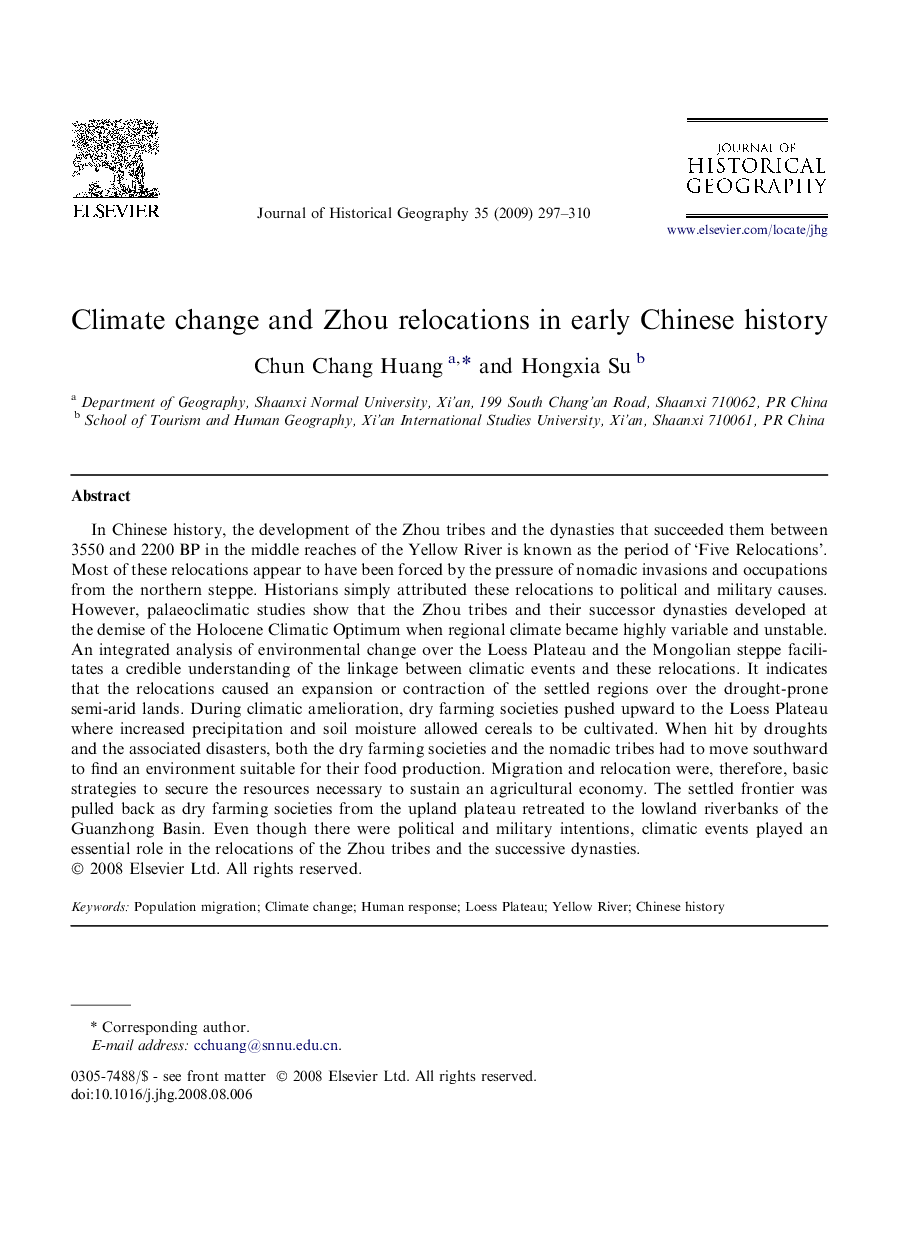| Article ID | Journal | Published Year | Pages | File Type |
|---|---|---|---|---|
| 1039750 | Journal of Historical Geography | 2009 | 14 Pages |
In Chinese history, the development of the Zhou tribes and the dynasties that succeeded them between 3550 and 2200 BP in the middle reaches of the Yellow River is known as the period of ‘Five Relocations’. Most of these relocations appear to have been forced by the pressure of nomadic invasions and occupations from the northern steppe. Historians simply attributed these relocations to political and military causes. However, palaeoclimatic studies show that the Zhou tribes and their successor dynasties developed at the demise of the Holocene Climatic Optimum when regional climate became highly variable and unstable. An integrated analysis of environmental change over the Loess Plateau and the Mongolian steppe facilitates a credible understanding of the linkage between climatic events and these relocations. It indicates that the relocations caused an expansion or contraction of the settled regions over the drought-prone semi-arid lands. During climatic amelioration, dry farming societies pushed upward to the Loess Plateau where increased precipitation and soil moisture allowed cereals to be cultivated. When hit by droughts and the associated disasters, both the dry farming societies and the nomadic tribes had to move southward to find an environment suitable for their food production. Migration and relocation were, therefore, basic strategies to secure the resources necessary to sustain an agricultural economy. The settled frontier was pulled back as dry farming societies from the upland plateau retreated to the lowland riverbanks of the Guanzhong Basin. Even though there were political and military intentions, climatic events played an essential role in the relocations of the Zhou tribes and the successive dynasties.
